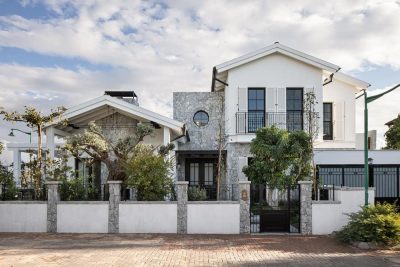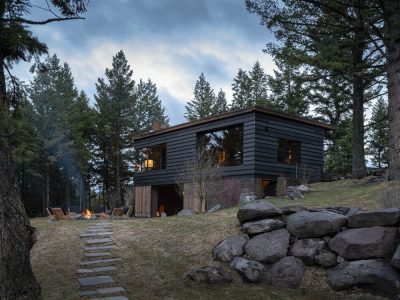
Project: Tinhouse
Architects: Rural Design Architects
Project Team: Gill Smith, Alan Dickson
Location: Milovaig, Glendale, Isle of Skye, Scotland
Area: 70 sqm
Photography: David Barbour, Rural Design, Alex Re
Tinhouse is located on the northwestern tip of the Isle of Skye, on a steeply sloping site overlooking The Minch, the body of water separating the Inner and Outer Hebrides. This rural house was completed in 2016 by the Rural Design Architects.
The project is an essay in landscape, economy, construction and imagination which shares the same design ethic as its neighbouring sister the Wooden House. Where, however, the Wooden House celebrates timber detailing the Tinhouse celebrates corrugated metal sheeting, commonly used on the agricultural buildings of the rural landscape. It does so in a thoroughly contemporary way by using mill finished corrugated aluminium as the external cladding for both roof and walls. Internally its timber boarding, concrete floor and plywood cabinetry add to the handmade palette giving the house a character that is simultaneously modern and rustic.
The simple form recalls both the archetypal child’s image of a house and the rural sheds that sit as ghosts in the landscape alongside the ubiquitous white rendered crofthouses. Tinhouse is similarly scaled to the smaller sheds and contains one bedroom along with the living space, kitchen, and bathroom.
The external metal skin predominates as a protective layer against the often ferocious storms with minimal openings cut out for the view. The long, horizontal slot cut in to the north elevation creates a point from which to view the landscape and seascape in good weather and bad, from the inside, a perfect hide.
The house has been designed and self-built by the practices founders, Gill Smith and Alan Dickson, and the materials were mostly chosen to allow for an ease of build by one person. In this way, the handmade Tinhouse celebrates the self-build tradition commonly found in a rural context. Where greater numbers were required, for example to raise the gable wall panels or install the steel beams, this became a celebration and a social event.
The use of materials adopts simplicity where complexity normally prevails, and this approach informed the aesthetic of the interior. The recycled, timber pocket doors have simple cut-outs instead of “ironmongery”, wooden dowels are used as door handles or coat pegs, and left-over cement board frames the shower opening.
An imaginative use of colour also informed the aesthetic of the house where moments are celebrated with highlights inspired by colours found naturally outside: the yellow or pink of the wild flowers, the green of the grass, the blue of the sky and the sea and the orange of the sunsets.
Similarly, the furniture informs the aesthetic and celebrates the handmade spirit of the house. This includes a concrete topped dining table on Douglas Fir sawhorses, beds and seats built in using leftover structural timber, a prototype “Mobius” coffee table which sits at the centre of the social space and offcuts of Douglas Fir as bedside tables.
The external landscaping uses timber and hand poured concrete surfaces which together with rough, large section timber walls create sheltered spaces and routes from which to enjoy the view beyond.
The completed building marks the end of a five year design and build process and the beginning of a new era for the house, that of a holiday house bringing enjoyment to many, and a new era for its authors who take inspiration and many creative ideas from the Tinhouse on to the next project. Tin house is now available to let please visit STAY for rates and further information.





















